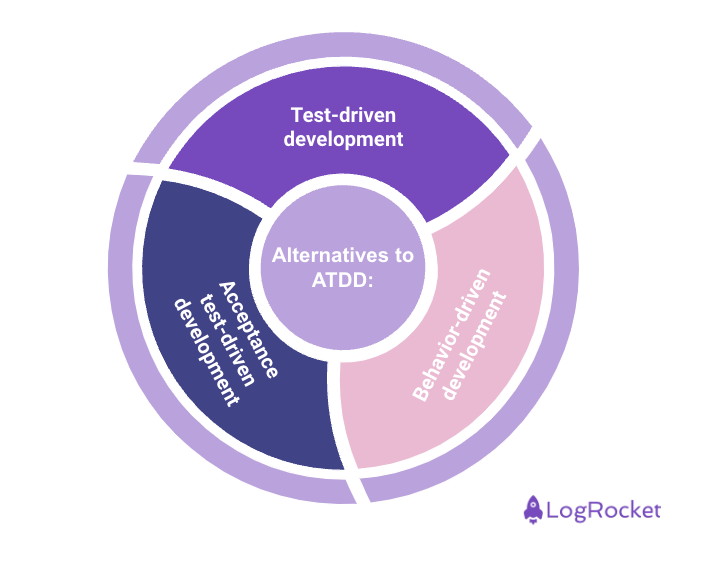When you go to develop a software application, there are a number of different methodologies that you can use to structure and streamline your development process. One of these methodologies is acceptance test-driven development (ATDD). ATDD fosters a collaborative environment ensuring all project stakeholders are aligned on the product requirements from the beginning.

In this article, you’ll learn more about ATDD, including its benefits, common pitfalls, and how to go about implementing it within agile teams.
ATDD is an agile methodology involving collaboration among customers, developers and testers to define acceptance criteria before starting any development. This helps in facilitating alignment on the product vision across stakeholders. By focusing on the end product in the initial stage, the ATDD strives towards streamlining the development process while enhancing the quality and relevance of the software.
The discussion that happens among the customer, developer, and tester to create acceptance criteria is called three amigos. Three amigos represents the following interests:
The goal of this discussion is to agree on what will be built and when it’ll be considered acceptable. Using this approach, the work should be reviewed incrementally. ATDD brings collaboration among different teams from the very beginning till the launch of the software.
The acceptance criteria defined together by three amigos acts as a guiding principle for developers to build the product and for testers to validate the way it’s supposed to function.
ATDD is also known as story test-driven development (SDD), specification by example, or behavior-driven development (BDD). Test-driven development (TDD) is another approach similar to ATDD used in building software products.
Let us understand the differences between these methodologies:

Test-driven development involves writing unit tests before coding. Focus is placed on developing small units of work in isolation. In this approach, a failing test is written first, enabling developers to write a minimum code to pass the test. It’s an iterative process that combines programing, unit test creation, and refactoring.
The TDD process comprises of red, green, and refactor phases:
This approach leverages collaboration among the business, developers, and testers to describe the acceptance test cases from the end user’s perspective (user stories) and build a product that meets the needs of users. Here are the steps involved:
Behavior driven development is a combination of TDD and ATDD focused on end user requirements and their interaction with the product. The key difference between TDD and BDD is that the BDD focuses on testing the behavior of the application and user scenarios whereas the TDD approach tests the code implemented. BDD inculcates writing the test cases in plain English and hence eliminates any language barrier between technical and non-technical teams. Here are the steps in BDD approach:
The acceptance test-driven development approach has various benefits to enhance the quality of software and improve the team efficiency. Some of the key benefits are listed below:
As every methodology comes with its own challenges, ATDD has some common pitfalls too. Addressing these challenges early can help in implementing ATDD effectively to reap its benefits. Let us take a look at the most common pitfalls encountered with ATDD:

Complex acceptance criteria can be difficult to understand. If the testers and developers don’t understand the acceptance criteria clearly then it can lead to building a product that doesn’t fully meet the criteria. This can lead to delay in meeting the timelines and wastage of resources. \
Mitigation — Keep the acceptance criteria simple to understand. Clarify the need by providing additional information such as examples in the acceptance criteria
ATDD is based on collaboration among team members and stakeholders. If any of the team members or stakeholders don’t participate and express their thoughts then it can lead to misunderstandings about product requirements. Ultimately the features built could not be what was initially expected.
Mitigation — An open communication culture and frequent discussions with the key stakeholders will help bring in more participation and collaboration
ATDD needs automated testing while building a complex software to ensure acceptance criteria is met as the software evolves. Teams without expertise in automation testing can struggle to implement ATDD.
Mitigation — Invest time in training the resources on automated testing or hire external experts to help set up an effective automation framework
As the software grows, and complexity increases, it’s crucial to adjust the test cases as per the changing requirements. Failure to maintain the test cases can lead to regression defects.
Mitigation — Regularly review the acceptance test cases and update if required as per changing requirements
Until the code meets the requirements identified in acceptance test cases, the developers need to refactor the code. However, refactoring the code multiple times to meet the exact acceptance criteria might turn out to be expensive and lead to delays in completing the projects.
Mitigation — There should be a trade-off between meeting the exact design and functional specifications per acceptance criteria and the effort involved to meet it. Issues/defects with minimal impact on users can be scoped to be fixed at a later date to speed up the time to market
Acceptance test-driven development within agile teams encourages collaboration, brings clarity in requirements, and ensures the end product is aligned with the stakeholder’s expectations. Let’s now understand how to implement ATDD in agile teams:
Automated testing tools can help run automated tests and reduce the manual effort needed leading to reduced time to market. Here’s a list of useful tools for implementing ATDD:
ATDD bridges the gap between technical and non-technical teams, fostering a shared understanding of product requirements and business goals. The software industry is evolving continuously, however the principles of ATDD — clarity, collaboration, and customer focus — remain relevant and enable teams to deliver a successful product.
When it comes to customer needs, ATDD provides a robust framework to deliver high-quality software. Adopting the ATDD methodology is a step towards achieving excellence in building software products with reduced costs and quicker time to market.
Featured image source: IconScout

LogRocket identifies friction points in the user experience so you can make informed decisions about product and design changes that must happen to hit your goals.
With LogRocket, you can understand the scope of the issues affecting your product and prioritize the changes that need to be made. LogRocket simplifies workflows by allowing Engineering, Product, UX, and Design teams to work from the same data as you, eliminating any confusion about what needs to be done.
Get your teams on the same page — try LogRocket today.

A practical guide for PMs who want to stop being bottlenecks, delegate smarter, and lead teams effectively with a clear ownership framework.

Stop letting unreliable data block features. Treat data as inventory to track quality, ownership, and ship with confidence.

Learn why slide decks slow teams down and explore better tools like whiteboards, PRDs, and prototypes to improve collaboration and alignment.

AI PM roles are evolving fast. Learn the five types of AI PMs, the skills they need, and how they shape AI products across industries.